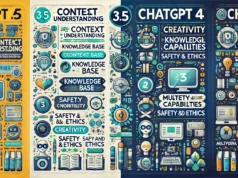How does GPT-3 contribute to the advancement of language processing in AI?
The Language GPT-3 Revolutionizes AI: A Glimpse into the Future of Language Processing

Advancements in artificial intelligence (AI) have always captivated the imaginations of scientists, researchers,
and technology enthusiasts. One such milestone is the advent of the Language GPT-3 (Generative Pre-trained
Transformer 3), which is revolutionizing the field of language processing.
Developed by OpenAI, the GPT-3 is the third iteration of the GPT series and has garnered immense attention due to
its unprecedented capabilities. This powerful natural language processing model boasts an astounding 175 billion
parameters, making it the largest language model ever created.
So, what makes GPT-3 so extraordinary? Its ability to generate human-like text with remarkable coherence and
fluency is a game-changer. GPT-3 is trained on a colossal amount of text data from diverse sources, allowing it
to comprehend and generate contextually relevant responses. The model has demonstrated exceptional prowess in
various language-based tasks such as text completion, translation, summarization, and even creating
conversational agents.
Unleashing the Power of GPT-3
GPT-3 has immense potential in transforming numerous industries. In the healthcare sector, it can aid in
analyzing medical records, generating patient summaries, and assisting with diagnostic decisions. This could
significantly enhance the efficiency and accuracy of medical professionals, leading to better patient care and
outcomes.
Furthermore, GPT-3 has the ability to revolutionize the customer service industry. Its language comprehension
and generation capabilities can enable conversational agents to interact more naturally and offer personalized
support to customers. The days of scripted and impersonal chatbots might soon be behind us.

Challenges and Ethical Considerations
While the prospects of GPT-3 are undeniably promising, there are challenges and ethical considerations that need
careful assessment. Despite the model’s remarkable abilities, it is not immune to biases and potentially
harmful behavior. The generation of false information, offensive language, or inappropriate content is a
concern that must be addressed to avoid negative consequences.
Additionally, ensuring responsible use of such advanced language models is crucial. Developers and researchers
must be mindful of the potential misuse or manipulation of GPT-3. From spreading misinformation to creating
AI-generated spam, there are risks that must be diligently managed to preserve the integrity and trustworthiness
of AI.
The Path Ahead
Looking to the future, GPT-3 opens up a world of possibilities for language processing and AI as a whole. Its
immense capacity to understand and generate human-like text places it at the forefront of AI advancements. With
further refinement, it can contribute significantly to fields such as content creation, language learning, and
even creative writing.
As researchers continue to push the boundaries of natural language processing, GPT-3 serves as a stepping stone
toward even more sophisticated AI models. This glimpse into the future reaffirms the potential of AI to
revolutionize how we interact with technology and how it can augment our abilities across diverse domains.
Undoubtedly, the Language GPT-3 has ushered in a new era, hinting at a future in which AI systems interact with
humans more seamlessly than ever before. Exciting times lie ahead as we navigate this extraordinary revolution in
language processing.









